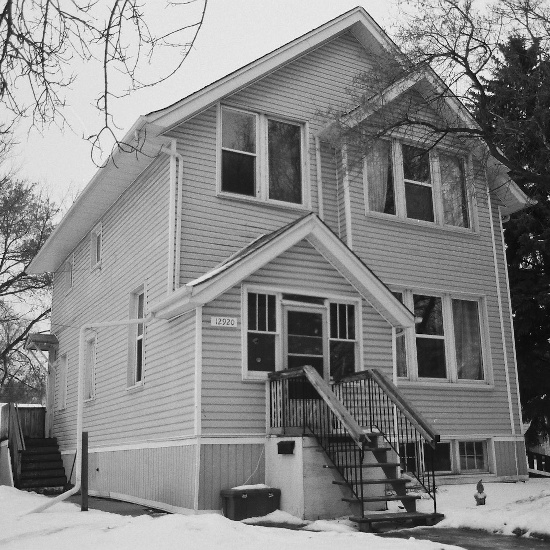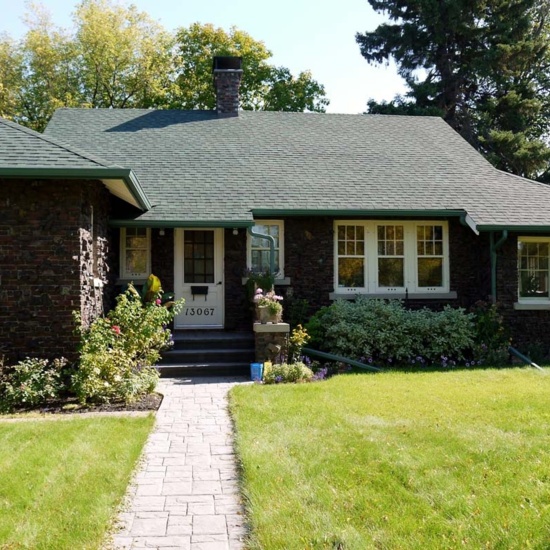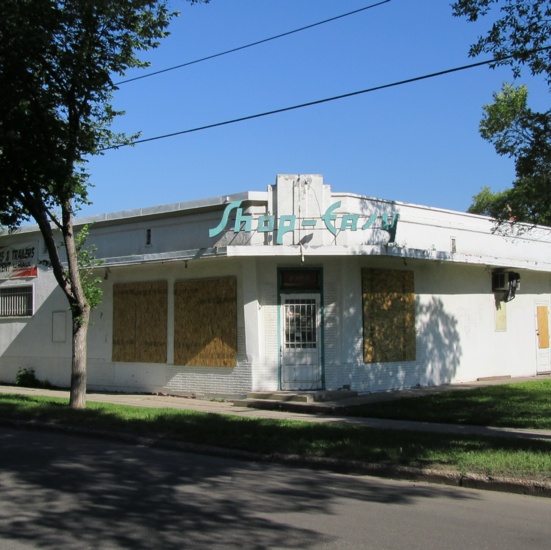Calder
Situated north of the city, Calder began as a rail town in 1909 and amalgamated with Edmonton in 1917.
Situated north of the city, Calder began as a rail town in 1909 and amalgamated with Edmonton in 1917.
The area that is now Calder - from the rail yards along Yellowhead Trail to 132 Avenue, and from 113 A Street to 127 Street - was surveyed as two quarter sections in 1882. The eastern section was subdivided first and became Elm Park when active settlement began in 1904. Elm Park was annexed by Edmonton in 1913. Hugh Calder, who lived in Strathcona with his wife Gertrude, established the Calder Land Company and purchased the west quarter section at the beginning of a local land boom in 1907. When the Grand Trunk Pacific Railway (GTPR) announced their decision in 1909 to make that area north and west of Edmonton their divisional point and home to a substantial roundhouse and rail yards, the Calder Land Company ran extensive ads for their land adjoining the GTPR property, giving “the public a fair chance of making a choice selection” in this “town with a future”. The GTPR rail yard employed 200 men and by March 1910 the small town of Calder had sprung up with a commercial centre along 127 Avenue and 129 Avenue. Although the town began with many living in tents, an ad at the time boasted that “twenty-five buildings composed of dwellings, stores, restaurants, etc. have been erected in Calder and it can safely be stated that nine out of ten of the GTP employees who have purchased property… purchased in Calder.” The land was highly desired; at one point 1,200 lots in Calder sold in three days.
The GTPR chose to enter Edmonton crossing the North Saskatchewan at its narrowest point at Clover Bar but the high cost of land within Edmonton and the boundaries of the Hudson’s Bay Company land reserve prohibited the railway from locating closer to the city centre. In 1910 the community that grew on the north side of the GTPR tracks was incorporated as the Village of West Edmonton, but the name Calder seemed locally preferred and Calder subsequently prevailed. It was indeed the westernmost community near Edmonton and the residents and village council tried to hold their own against the rise of the neighbouring city. By 1915 however, the village of 1,100 inhabitants was entirely surrounded by Edmonton proper and was in desperate need of civic utilities: more frequent mail service, electric lights, city water, sewage, and telephones. Calder amalgamated with Edmonton in 1917.
Starting in 1913 the Edmonton Interurban Railway ran five trips daily from Edmonton to St. Albert and offered Calder residents the privilege of a 30 minute commute into Edmonton from their stop at 127 Avenue and 118 Street. The Edmonton Radial Railway line took over the Interurban service just to Calder in 1917 but other municipal perks did not materialize quickly. The Shop Easy corner store was built about the time when roads into Calder were finally paved and the streetcar lines were removed in lieu of trolley buses in 1949, but it wasn’t until 1953 that residents were finally connected to city water and sewage lines. During this period of transition the Calder community and school also serviced many from Camp 550, Second World War emergency housing established from converted army huts located in what is now the Sherbrooke Community.
Like its genesis, the community was tied to the ebbs and flows of the railway company’s prosperity. Calder School and the oldest homes in the neighbourhood - like the clinker brick Fred Jones Residence, and the McConachie and Richard Brown Residences - reflect the earliest years of the railway’s prosperity and the burgeoning community. Most of the homes in the community, however, were constructed in the post-war land population boom in the 1950s. In 1923 the GTPR became fully absorbed by the Canadian National Railway (CNR). The CNR completed a five-year expansion of its Calder rail yards in 1972, only to close their Calder General Stores before that decade was out due to decreased rail volume. Calder suffered as one of the city’s poorest neighbourhoods, with a large portion of its population being new Canadians and senior citizens. The City of Edmonton chose Calder for a Neighbourhood Improvement Plan in the 1970s, infusing over one million dollars into the community to go towards housing upgrades, parkland development, library maintenance, improved drainage, and to address absentee landlords and transportation concerns. Seven community parks and a new senior’s drop-in centre were completed within the five-year plan.
Details
Sub Division Date
TBA



